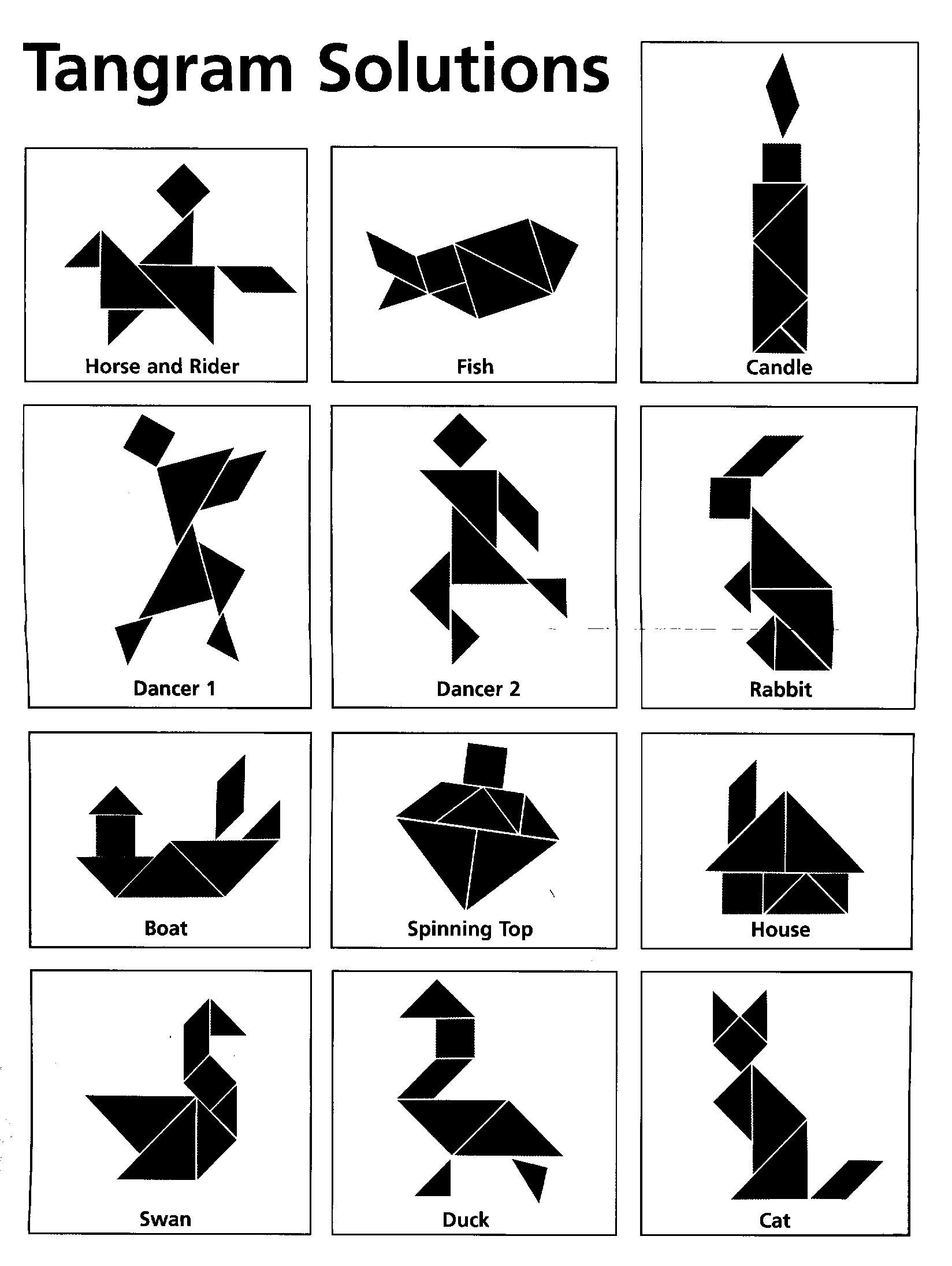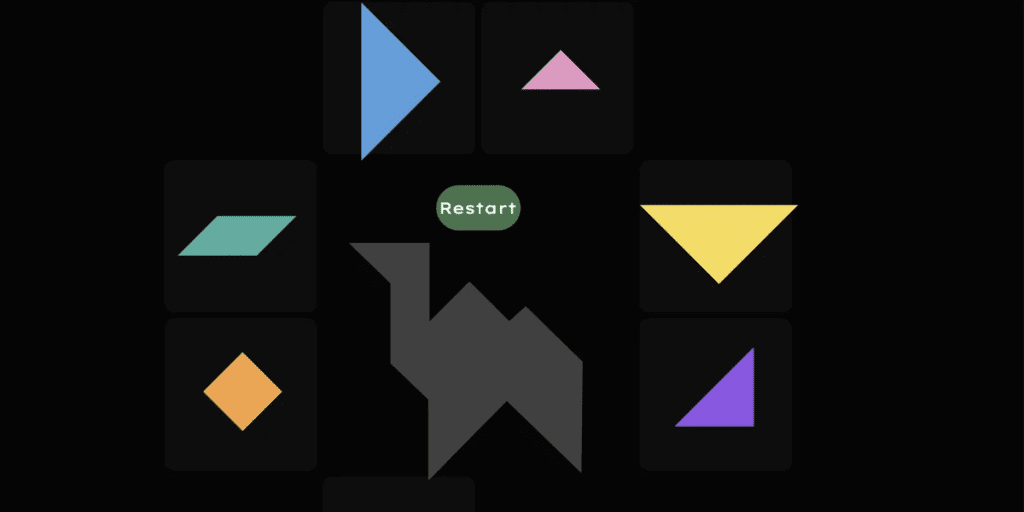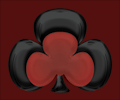The CSS Tangram Puzzle represents a creative leap in the world of interactive CSS puzzles, showcasing the remarkable potential of CSS in game development. Imagine combining the delightful complexity of the traditional Tangram game with the artistry of modern web design, all without relying on JavaScript. This intriguing challenge not only sharpens CSS skills but also provides insight into building puzzles with CSS that encourage spatial reasoning and problem-solving. Through this engaging CSS game development process, creators can explore innovative uses of Sass for CSS puzzles, transforming static shapes into interactive experiences. Join us on this journey to uncover how a simple set of shapes can lead to hours of fun and learning!
Exploring the realm of interactive web puzzles, one can discover the fascinating world of Tangram-style games. This unique puzzle, traditionally composed of geometric shapes, has been adapted for modern digital platforms, inviting designers and developers alike to experiment with their skills. By leveraging timeless concepts in game creation, enthusiasts can delve into crafting engaging experiences that combine visual appeal with logical challenges. As we clarify the methods behind these intriguing puzzles, we will also touch upon concepts such as utilizing CSS for dynamic interfaces and the use of preprocessing tools like Sass to simplify execution. Dive into the world of geometric problem-solving that transcends the limitations often imposed by traditional programming paradigms.
Introduction to CSS-Only Interactive Games
For many years, I held the belief that crafting drag-and-drop games, particularly those entangled with rotation and spatial logic, was a realm reserved strictly for JavaScript lovers. It was during a moment of curiosity that I posed a question to an AI: “Is it possible to create a fully interactive Tangram puzzle game with just CSS?” The AI’s response was something akin to a theatrical gasp, “Not quite — JavaScript remains essential.” At that moment, a spark was ignited within me, a passionate drive to go against the grain and demonstrate otherwise.
Thus, the journey began, fueled by the desire to explore the boundaries of CSS and discover how far this stylesheet language could be pushed in constructing engaging user interfaces. My motives weren’t purely about the challenge; they revolved around sharpening my CSS skills while entering a realm that most considered impossible. After all, isn’t exploring new frontiers the essence of learning?
Unveiling the Thrill of a CSS-Only Puzzle
So why take on the challenge of building a CSS-only game? The answer stems from a simple yet profound curiosity — what if? Pushing CSS to its limits will not only enhance my abilities but also deliver an exhilarating experience. Yet, the truth remains that CSS is inherently limited for these dynamic interactions. Unlike JavaScript, which thrives on logic, conditions, and methods, CSS is more static in nature. Sure, advancements like CSS variables and functions give it a semblance of dynamism, yet the essence of logic remains elusive.
This leads to a thought-provoking parallel: isn’t Sass, with its mixins and functions, perhaps doing what JavaScript does for CSS but in a more structured way? Why should we settle for mundane repetition when we have the means to create clean and efficient CSS using Sass? By employing Sass, we discovered its prowess in replacing JavaScript for low-level logic and puzzle behaviors, making our CSS code not only manageable but also dynamic in its own right.
Designing the Tangram Game Mechanics
This game is centered around seven distinct shapes, each a piece from the classic Tangram set, renowned for its versatility in forming a perfect square as well as various intricate designs. However, creating mere static pieces wouldn’t capture the spirit of engagement required. I envisioned a multifaceted experience tightly woven with interactive components: a visual goal for players to aim towards, a start button that seamlessly shuffles the pieces, and, importantly, clickable pieces that respond to the user’s actions.
To elevate the experience, feedback mechanisms were critical: the puzzle would indicate incorrect placements and celebrate triumphant completions — the essence of gamification. This dynamic interplay kept players enthralled, inviting them to explore and experiment with each piece as they worked towards piecing together their own masterpiece.
Building the Foundation — HTML Structure
In laying out the HTML structure, I carefully considered the elements at play, balancing simplicity and functionality. Each shape — representing the seven elements of the Tangram puzzle — was equipped with radio buttons that not only allowed for exclusivity but also provided a straightforward approach to tracking active states. This decision significantly streamlined the interaction process, ensuring users wouldn’t struggle with selecting multiple shapes at once.
Moreover, I opted for consistency across the board by using radio buttons for every element, including the start button. While a checkbox could have sufficed, unifying the input methods created a smoother user experience. To efficiently generate this intricate HTML structure, I leaned on Pug, simplifying the process without compromising the puzzle’s logic or behavior. This approach ensured that every element functioned harmoniously, ready to transform the player’s experience into an inviting challenge.
CSS Interactions: Beyond the Basics
Once the foundation was set, the next step involved diving deeper into CSS to facilitate the interactions and ensure the responsiveness of the game. This meant employing a wealth of CSS techniques, from transitions to animations, that would breathe life into the puzzle. Each piece required engaging visuals that not only captured attention but also enhanced the gameplay experience. After all, aesthetics play a crucial role in user engagement — vibrant colors and smooth transitions elevate a simple puzzle into a delightful challenge.
As the pieces began to take shape, CSS’s role transformed from mere styling to a participatory player in the game. It was essential to communicate feedback to users; animations signified a successful move or highlighted errors in an engaging manner, reinforcing the concept that while CSS may not be a logic engine, it can still convey emotions and excitement through design.
The Role of Responsiveness in Game Design
Crafting an interactive puzzle in CSS necessitated the inclusion of responsive design principles. Given varying screen sizes and orientations, I sought to ensure that every element scaled gracefully, whether viewed on a desktop or a mobile device. Using flexible units like percentages and ems, I configured the layout to adapt dynamically, thus keeping the experience consistent across all platforms.
This adaptability not only maximized accessibility but also enhanced user satisfaction. Players could immerse themselves in the tangram experience without being hindered by technical barriers, ensuring that they could focus solely on the joy of assembling the pieces — a priority for any game designer.
Integrating Feedback Loops for Enhanced Play
An integral part of the game design was crafting effective feedback loops. Understanding how users interact and receive information within the puzzle environment was vital. I implemented visual cues that triggered when a user selected a piece incorrectly, utilizing color changes and subtle animations to clarify the player’s next steps. This immediate feedback facilitated learning and adjustment, creating a more engaging experience overall.
Moreover, celebrating success was equally important. Upon assembling the puzzle correctly, users were met with animated confetti or a satisfying sound, transforming a static completion into a joyous achievement. This interplay of feedback and reward not only motivates players but also uplifts game engagement to a memorable interaction.
Testing and Iterating on the User Experience
As the development progressed, I recognized the significance of thorough testing to refine the user experience. Inviting friends and colleagues to interact with the game provided invaluable insight into areas of improvement. Observations regarding ease of use or difficulty with specific interactions underscored the importance of user-centered design. Their feedback was instrumental in identifying adjustments that elevated the puzzle’s playability.
Iterating based on real-world use cases allowed me to polish the design, ensuring that both novice and experienced players alike found the puzzle approachable yet challenging. Adhering to the principle that the best designs come from a cycle of testing and adjustment, I embraced this stage wholeheartedly, leveraging constructive criticism as a stepping stone for development.
Reflecting on the Journey: Learning Beyond CSS
Throughout the process of creating this CSS-only Tangram puzzle, I discovered far more than mere coding techniques; I unearthed a deeper understanding of interaction design and problem-solving. The challenges presented by working without JavaScript opened my eyes to the potential latent within CSS. It became evident that each design decision carries weight — every line of code is a step in a larger narrative.
Ultimately, this endeavor built my skillset, broadened my perspective on CSS, and reinvigorated my passion for web development. While the quest started out as a personal challenge, it has transformed into a celebration of creativity and innovation — proving that boundaries are merely illusions waiting to be broken.

Conclusion: The Journey of CSS and Tangram
As we conclude our exploration into the realm of creating a Tangram puzzle merely with CSS, it’s evident that while the path is laden with complexities, it opens up a world of possibilities for innovative web design. The endeavor proved that tempering expectations about CSS’s capabilities is essential. While CSS alone cannot emulate the intricacies of a JavaScript-driven game, with clever use of Sass and well-structured HTML, one can push the boundaries of what CSS can achieve in constructing interactive puzzles. Here are some key takeaways from this fascinating journey:
– CSS can indeed handle basic interactivity with the right approach, challenging the notion that JavaScript is the sole option for dynamic web applications.
– Utilizing Sass for CSS can streamline and simplify the development process, blending functionality with aesthetics efficiently.
– By rethinking how we structure our HTML, we can create user interfaces that are not only functional but also engaging.
This venture into a CSS-only Tangram puzzle serves as a testament to the capabilities of web technologies when approached with creativity and perseverance. Although some limitations inherently exist within CSS, initiatives like this underscore the notion that sometimes constraints can lead to innovative solutions. It encourages developers to delve deeper into the intricacies of CSS without becoming entirely dependent on JavaScript and opens a dialogue about the role of CSS in interactive design. To summarize the journey:
– Pushing boundaries fosters professional growth and fuels creativity within the developer community.
– Integrating multiple technologies effectively can yield unique applications that challenge traditional workflows.
– Exploring the potential of CSS can pave the way for more accessible web design, making interactive applications approachable for developers at all skill levels.















